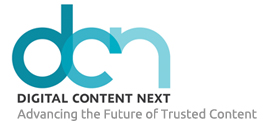In what seems to be a timely intersection with the furor over rebates, fraud, and lack of transparency in the online advertising community, a recent survey from Deloitte, Industry Index, and Flashtalking “Confined by the Garden Walls” highlights the increasingly volatile but interdependent relationship between the biggest advertisers and walled platforms – namely, Google and Facebook. Its findings “illustrate the disconnect between what clients want from their advertising platforms and what they can expect to get.”
 Despite the fact that rebate issue continues to get regular coverage by major media outlets like The Wall Street Journal and Ad Age, few advertisers are rushing to openly join the conversation. In the same vein, conclusions from the study highlight the ongoing struggle to understand the dramatic contradictions at play. To wit: While “only 22% of brands noted discomfort with Google’s data policies,” at the same time, “95% think data transparency at a user level is important or very important.”
Despite the fact that rebate issue continues to get regular coverage by major media outlets like The Wall Street Journal and Ad Age, few advertisers are rushing to openly join the conversation. In the same vein, conclusions from the study highlight the ongoing struggle to understand the dramatic contradictions at play. To wit: While “only 22% of brands noted discomfort with Google’s data policies,” at the same time, “95% think data transparency at a user level is important or very important.”
While it’s easy to highlight the obvious conflicts at work here, making sense of the situation is more nuanced. Our take:
- Consolidated Market Conditions Dramatically Favor Digital Giants. In Q1 of this year, Google and Facebook combined to realize 85% of online advertising market share. So it’s not surprising that the two companies don’t have to negotiate terms and conditions much. This situation won’t persist forever – with Bing investing significantly in its platform, and Verizon’s acquisitions of AOL and Yahoo! expected to impact the marketplace – but it’ll continue to be a bumpy couple of years for large digital advertisers, absent of significant regulatory changes, which seem unlikely.
- The “Lure of Ease” Has Very Strong Appeal. Few brands have been able to construct digital marketing operations over the past decade that can provide the requisite scale. This will happen in due course, as “marketers at top brands have long realized that to own your customers you have to own your data”. And they’re investing furiously in marketing infrastructure to get there. In the meantime, they need to continue to nurture uneasy alliances with the digital behemoths in order to feed their own massive marketing engines.
- Even With Challenges, Digital Preferable to Alternatives. Sure, brands are forecast to spend a smidge more on digital advertising this year than TV, for the first time, to capture $72 billion (36.8% share) in the U.S. marketplace – which is forecast to total $195 billion in 2016. But that means they will spend more than $120 billion on TV, radio, print, and out-of-home – all of which are generally considered to be inferior when it comes to ROI precision or user data access.
- Alternatives Do Exist, But Require Work. Without question, Google and Facebook offer incomparable digital advertising scale and targeting – one-stop shopping at previously unimaginable heights. And their brands are of course blue chips, and no one appreciates top brands like marketers do. But taking a scrappy approach to digital marketing can pay dividends. Going off-brand allows advertisers to strike better deals, and not just lower prices, but also much greater transparency and data control. This is approach requires legwork and explanation up-and-across the organization about avoiding the recognizable brands, and might not even perform as well in the final analysis, but in some (possibly many) situations, a beat-up pickup truck can do the job almost as well as a shiny new Cadillac – and for a fraction of the cost.
 Tim Bourgeois (@ChiefDigOfficer) is a partner at East Coast Catalyst, a Boston-based digital consulting company specializing in working with clients on strategic roadmaps, digital marketing audits, and online marketing optimization programs.
Tim Bourgeois (@ChiefDigOfficer) is a partner at East Coast Catalyst, a Boston-based digital consulting company specializing in working with clients on strategic roadmaps, digital marketing audits, and online marketing optimization programs.



 Eric Hadley (
Eric Hadley (


 Broken out by publisher type, it’s easy to see how nuanced attentiveness is across different types of content. I found it noteworthy that local news sites command more engagement than major news outlets, even with undoubtedly fewer resources.
Broken out by publisher type, it’s easy to see how nuanced attentiveness is across different types of content. I found it noteworthy that local news sites command more engagement than major news outlets, even with undoubtedly fewer resources.

 Instagram’s mobile footprint is strong as well. Instagram users identify mobile as their most important device for getting online. In Q2 2016, Instagram’s global CPM registered at $6.30, an increase of 42% quarter-over-quarter.
Instagram’s mobile footprint is strong as well. Instagram users identify mobile as their most important device for getting online. In Q2 2016, Instagram’s global CPM registered at $6.30, an increase of 42% quarter-over-quarter.

 Dave Marquard is currently Vice President of Product Management, Publisher Solutions and RTB Products at Integral Ad Science. For the past 15 years he has held leadership roles in product management, engineering, and marketing at internet technology and enterprise software firms such as Google, IBM, and Lombardi Software.
Dave Marquard is currently Vice President of Product Management, Publisher Solutions and RTB Products at Integral Ad Science. For the past 15 years he has held leadership roles in product management, engineering, and marketing at internet technology and enterprise software firms such as Google, IBM, and Lombardi Software.




